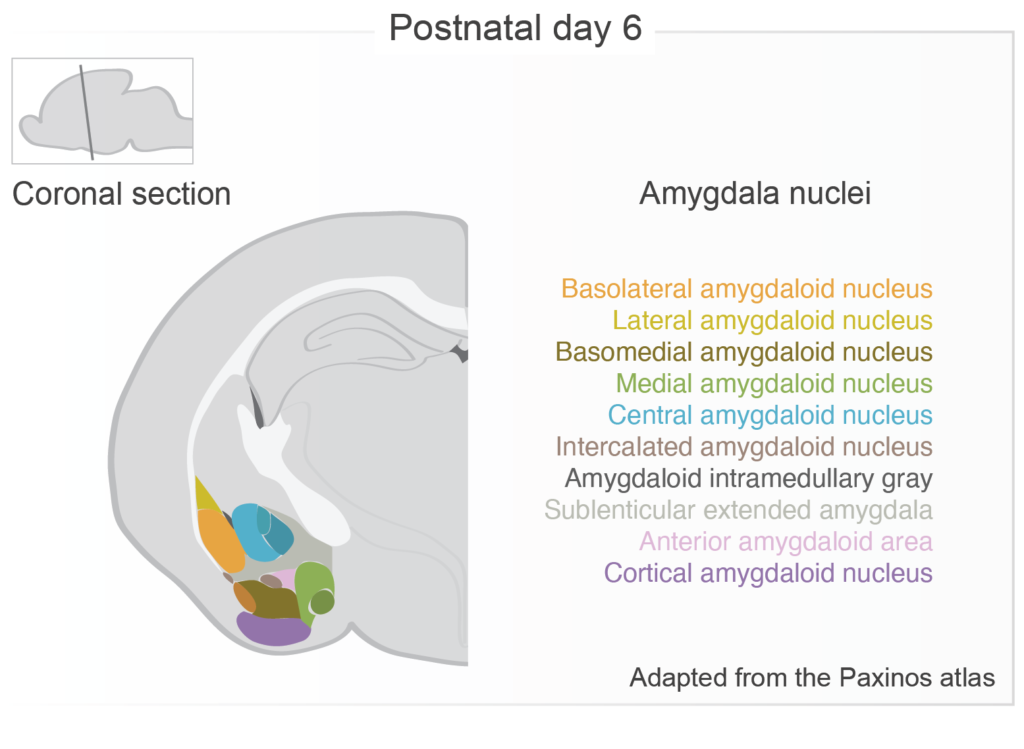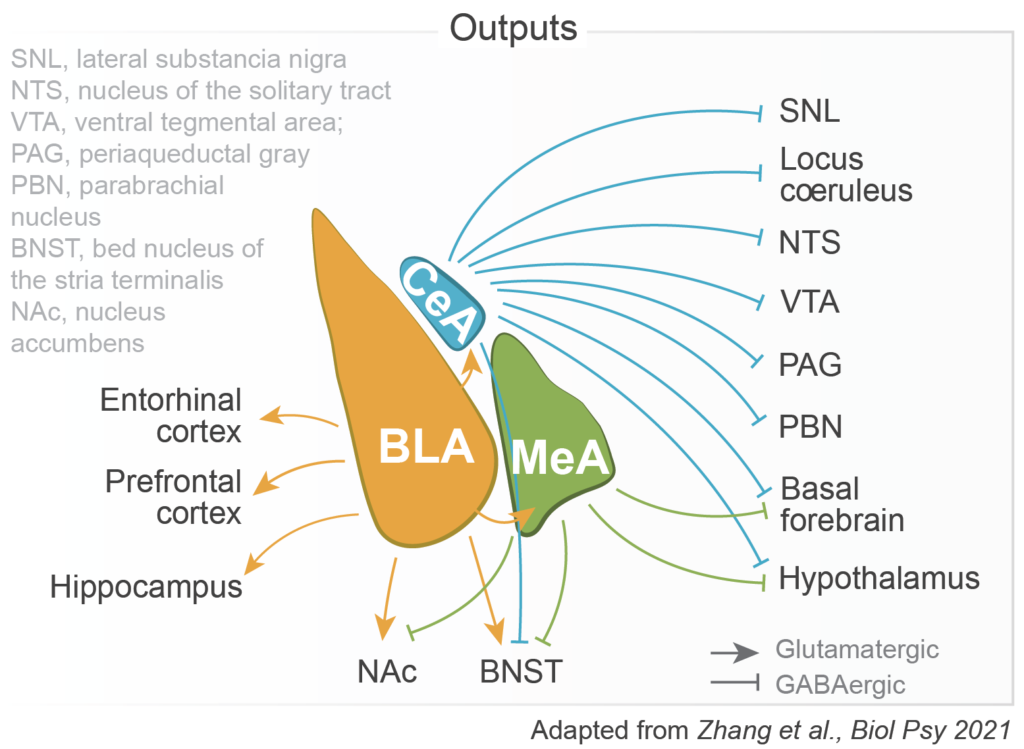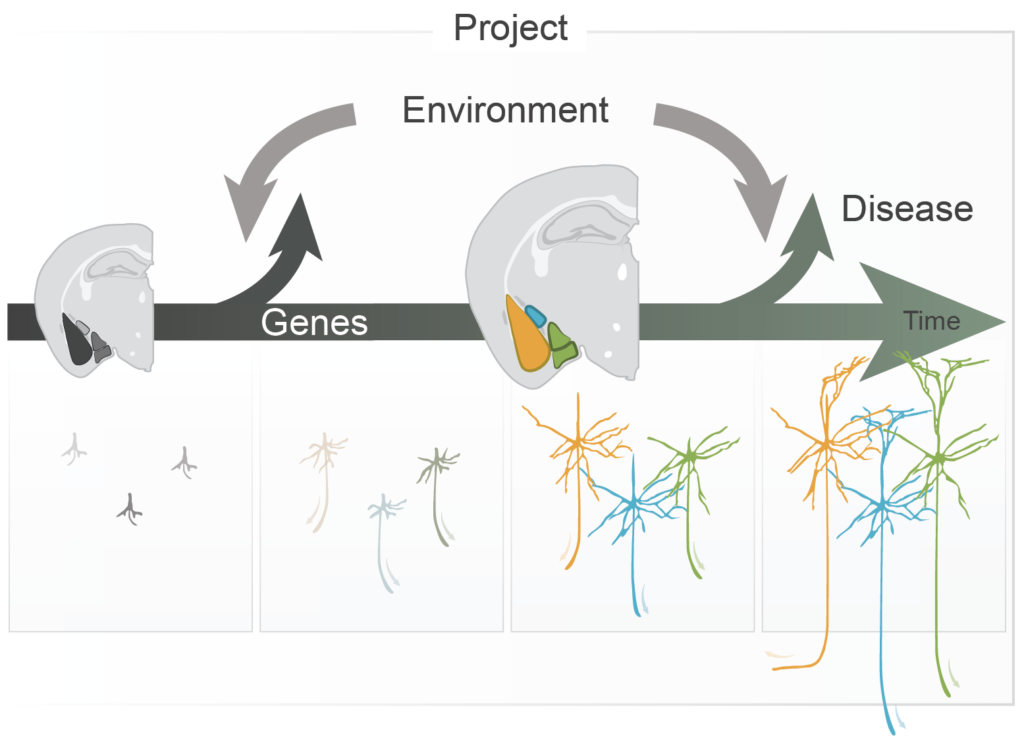Research

Reconstruction of axonal projections after AAV-egfp injection in the basolateral amygdala nucleus (adult mouse brain, top view) – from the Allen Brain Connectivity Atlas.
Neuropsychiatric disorders, such as anxiety or depression, are primarily characterized by dysfunctions in emotional regulation. In the brain, the amygdala is a key structure in allowing the regulation of emotional states. This deep forebrain structure is organized into distinct specialized nuclei (Fig. 1) with specific cell types and connectivities (Fig. 2), which are at the basis of amygdala information processing. Impairment in their function is associated with abnormal behaviors, notably in fear conditioning and emotional learning.
Neurons of the distinct amygdala nuclei are born early during embryonic development and have diverse origins within the developing brain. Once amygdala neurons have reached their final position, they send axons to a variety of brain regions (Fig. 2). While amygdala neurons are born early, emotional circuits mature during postnatal life upon environmental signals relayed by sensory networks. During this critical period, unpredictable maternal signals lead to aberrant emotional circuit maturation and poorer control of emotion-related behaviors in both human and rodents.

Figure 1 | Amygdala nuclei and their subdivisions at postnatal day (P) 6 in mouse.

Figure 2 | Main outputs of 3 major amygdala nuclei, the basolateral (BLA), the Central (CeA) and the Medial (MeA) nuclei.
Despite the critical roles of the amygdala in Vertebrates, how the diversity of amygdala neurons and their connectivity emerge during development and how they are differentially affected in diseases remain largely unknown.
Our work aims at unravelling the molecular developmental trajectories of amygdala neuron types and identifying the intrinsic (genes) and extrinsic (environment) factors controlling the emergence of amygdala connectivity (Fig. 3).
For this, we will use recent advanced technologies (e.g. single cell transcriptomics and connectomics) and computational analyses, which will give new insights into amygdala neuron origins, organization into circuits, and function, allowing for a better understanding of this behaviorally central brain structure in normal and pathological conditions.

Figure 3 | Research project: Amygdala neuron type fate acquisition during brain development.